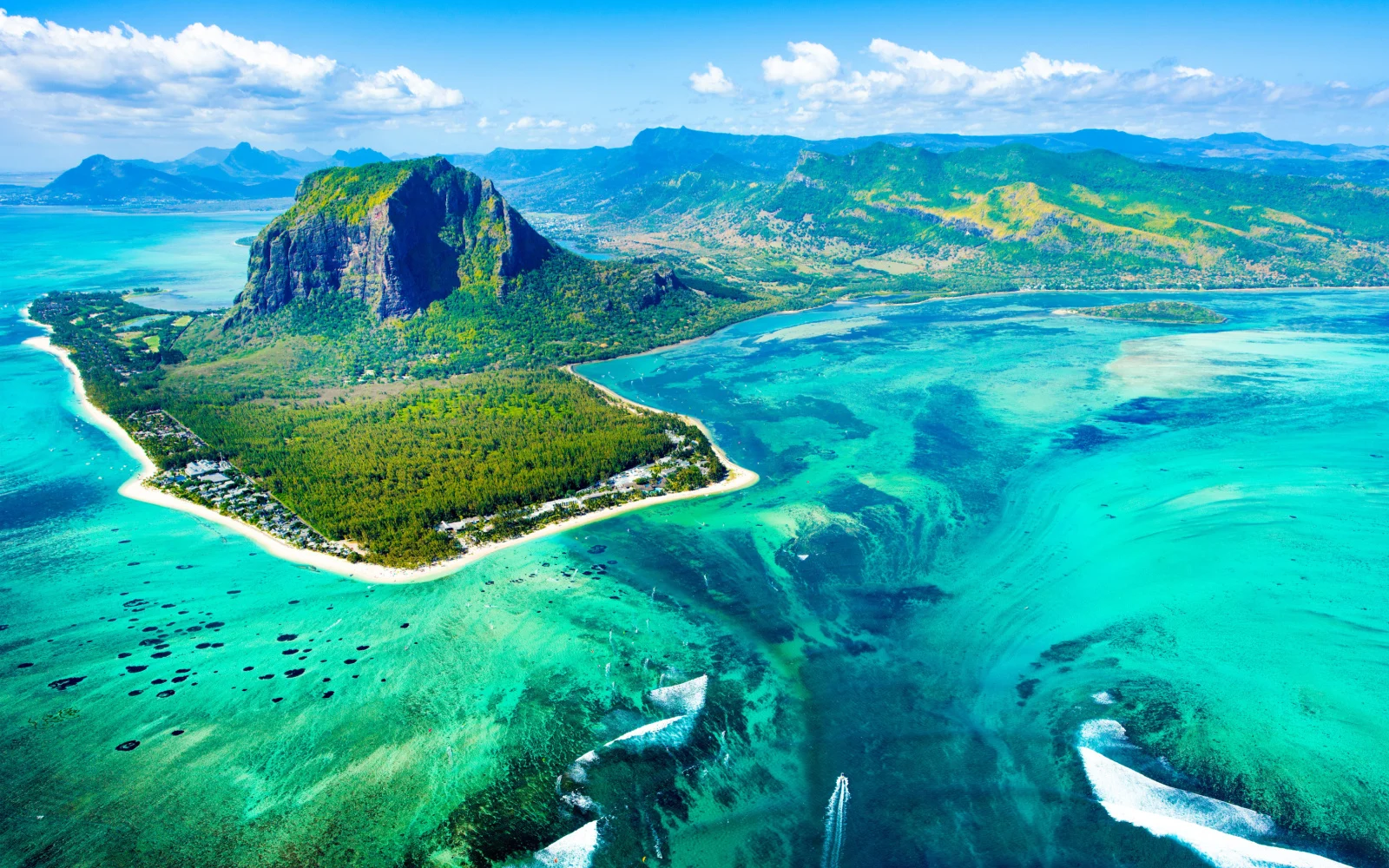What's the best time to visit Mauritius?
The best time to visit Mauritius is from September to December, when the early summer wet season offers warm, relatively dry weather ideal for beach and underwater activities. This period also features cultural festivals like Thimithi and Ghoon, showcasing the island’s diverse heritage. However, it’s the peak tourist season, so we highly recommend booking your flight and accommodation early.
Mauritius is a beautiful island country in East Africa and a popular destination for tropical vacations and honeymoons. The beaches are definitely the main attraction when it comes to visiting Mauritius, which has pristine sandy shores on the gentle waters of the Indian Ocean.
Inland, the island country boasts lush tropical landscapes and dramatic mountains, such as Le Morne Brabant Mountain. Be sure to take at least one day to explore the capital Port Louis and its great culinary scene.
Mauritius is a great destination for a tropical getaway, but you want to make sure you visit when you can actually lounge on the beach. Here is a quick guide to the seasons in Mauritius and when you should visit.
Overall Best Time to Visit Mauritius
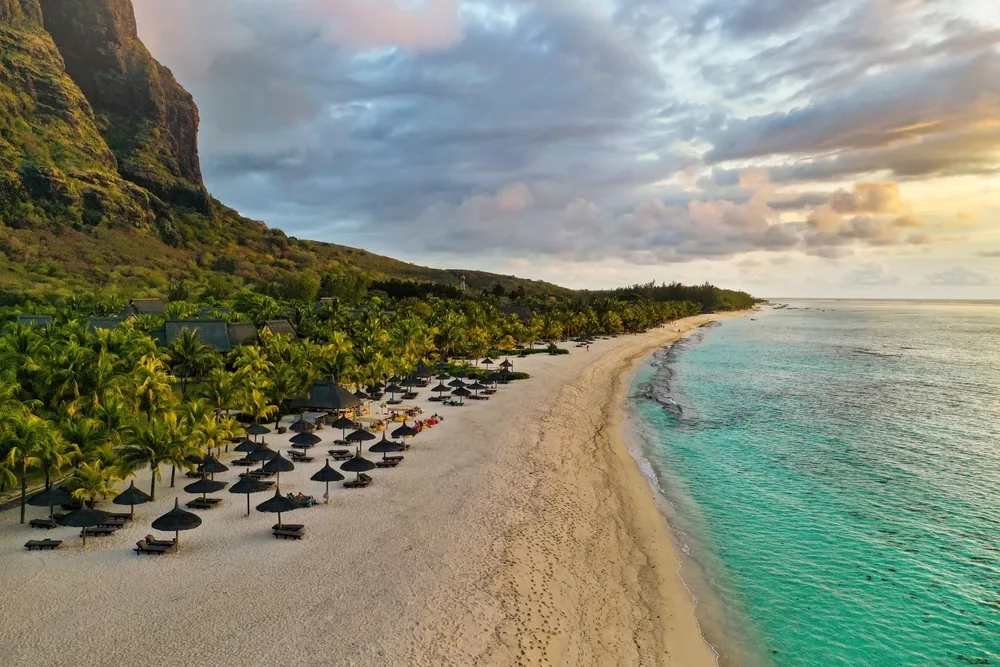
Lobachad/Shutterstock
The best time to visit Mauritius is from September to December, which marks the beginning of the island’s summer wet season. Mauritius has a tropical climate, like most of its neighboring islands.
That means the weather is generally warm, with rare periods of cooler temperatures at night. The weather is also divided into a distinct rainy and dry season.
Due to its mountainous landscape, Mauritius has several microclimates, and some parts of the island are far rainier than others. September to December mark the beginning of the rainy summer season in Mauritius.
Although the weather is warm all year round, temperatures are a bit cooler during the dry season.
By September, daily high temperatures are back up to 25 degrees Celsius (77 degrees Fahrenheit). In October, the weather is even warmer, with average daily highs of 26.8 degrees Celsius (80 degrees Fahrenheit).
It is warm enough to go swimming and work on your tan. Although September marks the beginning of the rainy season on the island, conditions are actually fairly dry. From September to November, the average monthly rainfall is at most 69 mm (2.7 inches).
December is slightly rainier, but still not in the peak of the rainy season. At worst, you can expect sporadic daily showers and the occasional downpour that just provides a welcome cooling shower.
These weather conditions are perfect for swimming and most beach-related activities, such as:
- Snorkeling
- Diving
- Fishing
Thanks to the relatively dry weather and warmer temperatures, visibility in the water is at its best, so this is a great season for underwater sports. During this season, you can also explore the stunning cultural diversity that characterizes Mauritius thanks to several religious festivals.
In November, the island’s Hindu population celebrates Thimithi, a festival honoring the goddess Kali when devotees walk on fire.
In October and November, local Muslims celebrate Ghoon, a Shi’ite festival with drumming and parades. This is usually the most crowded time in Mauritius as visitors try to take advantage of the great weather, so book resort reservations well in advance.
Cheapest Time to Visit Mauritius
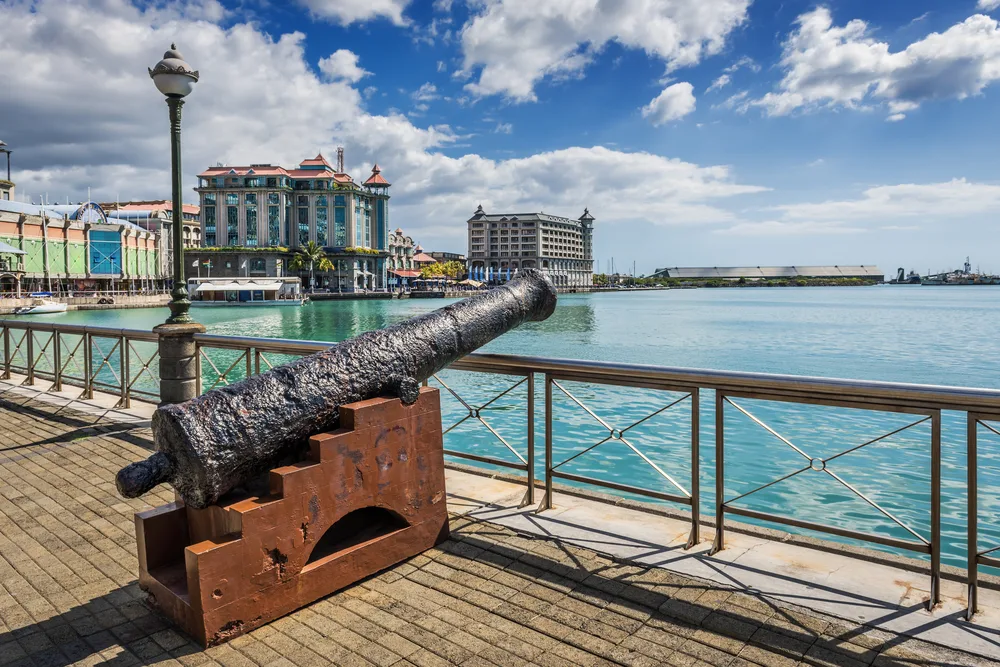
Ppictures/Shutterstock
The cheapest time to visit Mauritius is during the island’s dry season, which runs from June to August. During this season, which coincides with winter in Mauritius and summer in the Northern Hemisphere, there is much lower demand for tourism than during the rest of the year.
Since it is warm in the Northern Hemisphere, tourists don’t feel the need to head south to escape the chill. Since there are fewer tourists around, prices tend to go down.
In July, even high-end resorts offer discounts of 20-25%, making this the best time to come if you want to stay in luxurious surroundings for lower prices. Some hotels even cost 50% less than they do during the peak season.
Getting to Mauritius will eat up a lot of traveler’s budgets. Since the island is so far away from most major origin airports, flights are usually pricey.
You can find discounts on flights in January or February, when many airlines offer post-holiday sales. Flights are slightly more affordable in the summer as well due to low demand.
Least Busy Time to Visit Mauritius
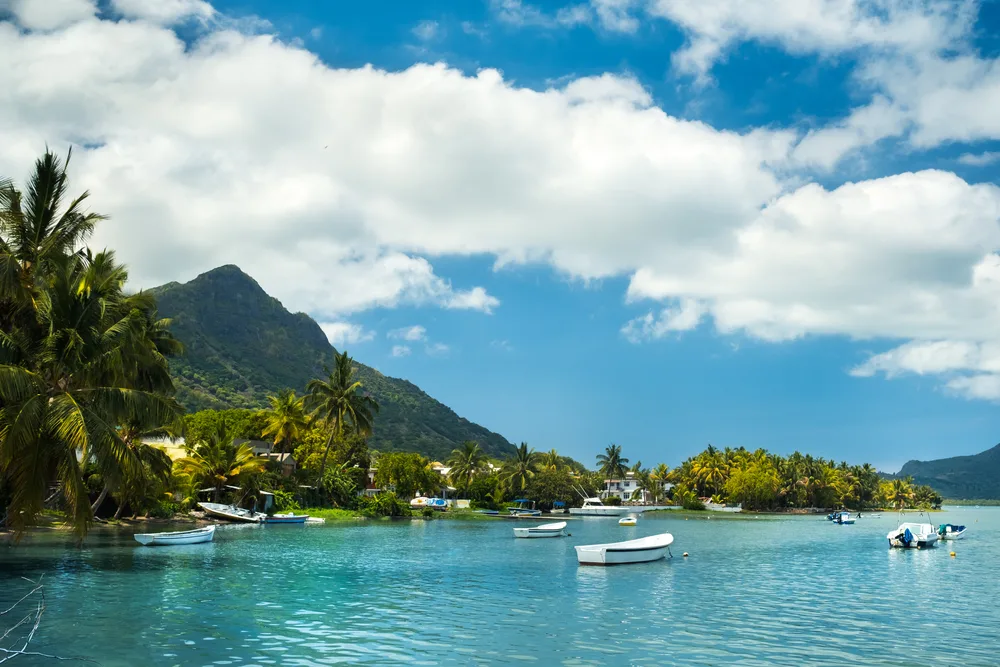
Lobachad/Shutterstock
The least busy time to visit Mauritius is during the island’s winter dry season, from June to August. As mentioned above, the dry season sees a dip in international visitors because it is summer in the Northern Hemisphere.
During the dry season, temperatures are cooler in Mauritius. Average daily highs in July are the lowest they are all year, at around 24.6 degrees Celsius (76 degrees Fahrenheit).
This is the season for the southeasterly trade winds, which make it feel even cooler than the reading on the thermometer. Although this temperature is still warmer than what most places experience in the winter, it is a bit too chilly to get the full tropical experience on the beach.
At night, you’ll need a light jacket. However, you’ll be rewarded with beaches that are nearly empty, so your swimming experience will be a much more pleasant one, even if you need to dry off faster after you get out.
This season is better for certain types of water-based sports, such as surfing and kitesurfing.
The winds mean that the wave conditions are great for sports, whether you’re taking your first surfing lesson or one of the pros. Head to popular surf spots on the east coast of the islands, or Tamarin Bay on the western side.
Worst Time to Visit Mauritius
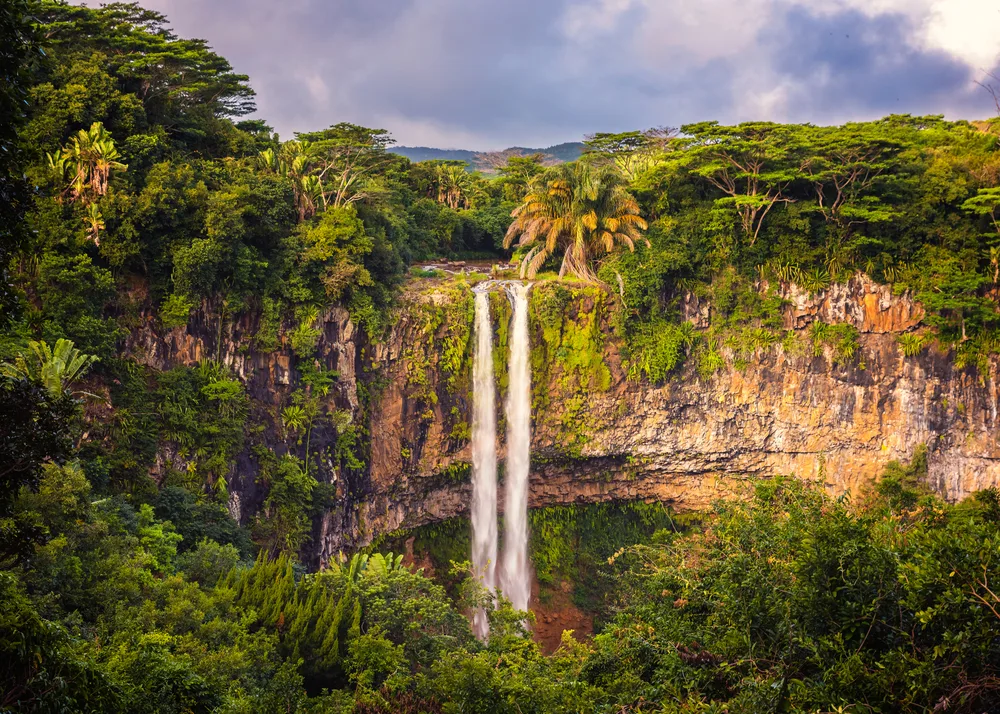
Roberto Binetti/Shutterstock
The worst time to visit Mauritius is during the peak of the rainy season, from January to March, when the weather is the worst for a time at the beach.
The rainy season in Mauritius formally lasts from September to May, but it peaks in January, February, and March. These months are the rainiest. February receives a whopping 253 mm (nearly 10 inches of rain) on average.
While there are sunny days sprinkled in between, and the mornings tend to be free of rain, the frequent showers will affect your trip. January to March is also peak cyclone season. While Mauritius is west of the peak cyclone zone in the Indian Ocean, it can get affected by storms during this time.
Cyclones can cause flooding and damage vital infrastructure such as electrical lines. In extreme cases, people have been injured or killed. Mauritius is also plain unpleasant during the peak of the rainy season.
January and February are the hottest months, with most days reaching above 30 degrees Celsius (86 degrees Fahrenheit). The high humidity makes it feel even more sticky and unpleasant, even at night.
The islands are also fairly crowded during this time as many visitors from the Northern Hemisphere are looking to escape their winter blues. Expect high resort prices and plenty of people around. However, there are some benefits to the season.
This is peak festival season in Mauritius since many of the island’s main ethnic communities celebrate their major holidays during this time. Chinese New Year, Spring Festival, and Holi are all big, colorful events.
You can also have pleasant beach weather if you choose your region of the island wisely. Even during the rainy season, the eastern coasts tend to be drier and more pleasant.
Mauritius by Month: Climate & Activities

Wonderful Nature/Shutterstock
Still unsure about the best time to visit Mautirius? Take a look at our summary of the weather and climate by month below:
January
January in Mauritius, with warm temperatures averaging 73 to 85°F (23 to 29°C), is perfect for enjoying the island’s beautiful beaches like Flic en Flac, exploring the vibrant capital city of Port Louis, and experiencing the colorful Hindu festival of Thaipoosam Cavadee.
February
February continues the summer season, ideal for water sports such as snorkeling and scuba diving in the crystal-clear waters, visiting the lush Pamplemousses Botanical Garden, and exploring the island’s rich Creole heritage in the village of Chamarel.
March
As the summer heat lingers in March, with temperatures from 73 to 84°F (23 to 29°C), enjoy exploring the underwater world at Blue Bay Marine Park, hiking in the Black River Gorges National Park, and witnessing the vibrant Holi festival.
April
April’s milder weather, with temperatures between 71 to 82°F (22 to 28°C), beckons for trips to the idyllic Île aux Cerfs, visiting the historic Le Morne Brabant, and enjoying the island’s tropical fruits and seafood cuisine.
May
May brings cooler and drier weather, from 66 to 79°F (19 to 26°C), perfect for exploring the colonial Eureka House, relaxing in the luxurious resorts along the coast, and visiting the Grand Bassin, a sacred Hindu site.
June
June, with temperatures between 63 to 75°F (17 to 24°C), ushers in the winter season. It’s an ideal time for whale watching off the coast, exploring the bustling markets in Port Louis, and enjoying the serene beaches with fewer tourists.
July
July’s mild temperatures, ranging from 61 to 73°F (16 to 23°C), invite you to explore the island’s interior, such as the Vallée des Couleurs Nature Park, and to experience the local culture at the annual Mauritius Marathon.
August
In August, with temperatures of 61 to 73°F (16 to 23°C), take advantage of the cooler weather to hike the Moka mountain range, visit the historic Mahébourg, and explore the fascinating Mauritius Aquarium.
September
Welcoming spring, September, with temperatures from 63 to 75°F (17 to 24°C), is perfect for kite and windsurfing on the east coast, visiting the Casela World of Adventures, and exploring the island’s sugar plantations and rum distilleries.
October
October’s warmer days, from 66 to 77°F (19 to 25°C), are ideal for relaxing on the pristine beaches of Trou d’Eau Douce, exploring the vibrant capital city of Port Louis, and snorkeling in the clear waters of Trou aux Biches.
November
November, as summer returns, temperatures from 69 to 81°F (21 to 27°C), is a time for enjoying outdoor dining with Creole cuisine, exploring the lush landscapes of the Chamarel Seven Colored Earth Geopark, and visiting the SSR Botanical Garden in Pamplemousses.
December
December brings warm summer weather, from 72 to 85°F (22 to 29°C), along with festive holiday spirit. Enjoy water activities like catamaran cruises, celebrate the festive season on the beach, and ring in the New Year with spectacular fireworks over the ocean.
Frequently Asked Questions
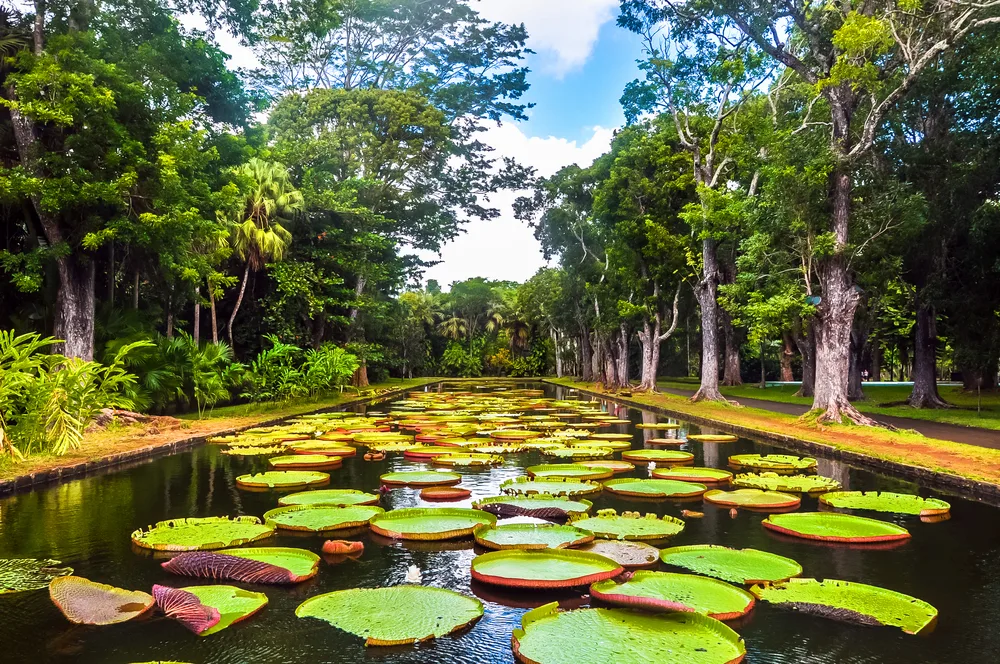
Natalya Sterleva/Shutterstock
Here are a few top questions people have asked that may help you find the best time to visit Mauritius:
What is the best month to go to Mauritius?
The best month to go to Mauritius is October, which has pleasant beach weather. Expect warm temperatures, but not that much rain.
When is the rainy season in Mauritius?
The rainy season in Mauritius lasts from October to April. The most rain falls in January, February, and March.
When is the best weather in Mauritius?
The best weather in Mauritius is when it is warm, but also dry. This weather occurs during the transitional months from the wet to the dry season and vice versa. The best weather is in April-May and again in September-October.
When are the best dates to visit Mauritius?
The best dates to visit Mauritius are during the months with the best weather (April, May, September, or October). You also want to avoid dates that fall on major holidays, such as Easter.
What time of year is Mauritius the least expensive?
Mauritius is the least expensive during the low season, from June to August. The weather is cooler and windier at this time, so not as many people visit in search of their tropical paradise.
So, What’s the Best Time to Visit Mauritius?
The best time to visit Mauritius is during the beginning of the rainy season, from September to December. This season has the best of all weather—it’s warm, but not too hot, and relatively dry but not windy.
So, with so much to see and to and plenty of amazing times to visit, what are you waiting for — book your trip today and experience for yourself all that Mauritius has to offer. Happy travels!



